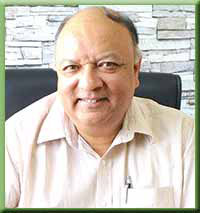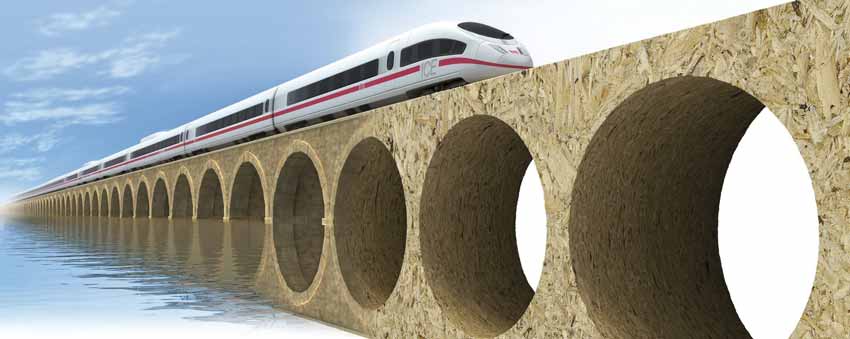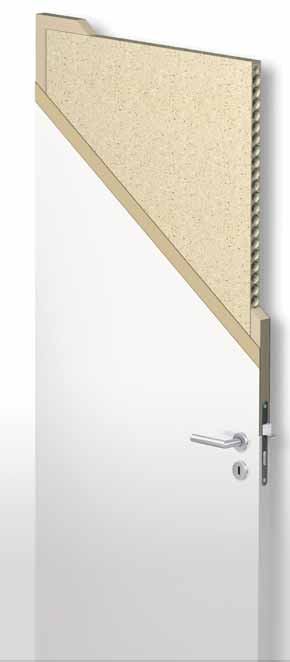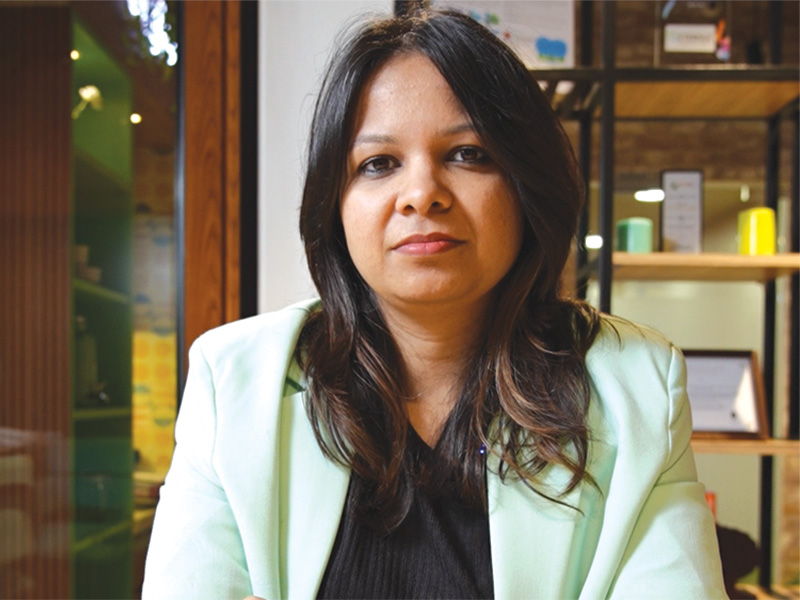
"Very few people in India know that the Sauerland infill board is in use by the door industry for 63 years as a timber substitute for infill material having withstood the test of time over 6 decades, and used in over 65 countries, which means it has global acceptance. It is reasonable to say that it is much older in use than the timber baton filling, which is common in India in the flush door industry," says Mr. Nitin Vaze, CEO of Sleek Boards (I) LLP, in an interview with MGS Architecture.
May we have a word on the history of Sleekboard India's operations, the various product verticals, and its association with Sauerland Spanplatten in particular?
Sleek Boards is India's largest professionally managed marketing company for top quality Hardboards, Particle Boards, Jute Particleboards, MDF, and Tubular Particle boards. The company has tie-ups for representing many large facilities for supply of Wood based, and Jute Particle based panels for the Indian market.
Sleek Boards represents:
Finsa of Spain for Plain and Pre-laminated Particle Boards and MDF. E1 grade and CARB certified available. PEFC Certified Supplier.
Finnish Fibreboards Ltd., Finland, for Hardboards E1 Grade. PEFC Certified Supplier.
Sauerland Spanplatten GmbH & Co KG for Tubular and Solid Filler Cores used in Flush Doors and Molded Skin Doors. Upto 60 minute Fire rated Cores as well as Acoustical Cores. E1 Grade PEFC Certified Supplier.
Heveaboard Berhad, Malaysia, for Wood Based Plain Particle Boards E2, E1, E0 and Super E0.
Star Particle Board Mills Ltd, Bangladesh, for Jute Based low density Particle Boards used for Filler Cores in Flush Doors and Molded Skin Doors from 26mm to 41mm.
Sleek Boards provides technical and marketing support to all customers based in Indonesia, India, Malaysia, Singapore, Philippines, Bangladesh, Pakistan, and Srilanka for Sauerland Spanplatte Germany.
It's been quite a while since you introduced Sauerland's filler cores in the country. Please elaborate the merits of this product, its variants, and the innovative features that have been incorporated over the years.
Everyone is aware that the concept of recycling wood scrap as an infill in doors is no more a reality, as the saw mill operations are getting smaller with reduction of timber availability and on the other hand there is an explosion of construction due to the rise in housing needs all over India. More than 12 lac trees every year are required to feed the infill needs of over 100 lac doors each year.

The tubular infill boards are an ECOFRIENDLY AND GREEN PRODUCT INITIATIVE replacing the 80% of timber used internally as door infill which dramatically improves the performance of the door in following manner. These filler cores are already in use in 65 countries worldwide for the last 63 years.
- Sound Insulation: Extruded tubular and solid boards offer a wide range of sound insulation results for light weight construction as well as high end solutions.
- Fire Resistance: Since the board being produced by Extrusion method, is the particle direction is predominantly vertical to surface, which in case of exposure to fire provides a low rate of burning. Sauerland offers full support for safe fire door constructions.
- Construction: The density in solid areas i.e. walls of board is as high as 520 Kgs/m3. Further, the arch principle, as in case of construction of dams or bridges, gives high impact resistance.
- Thickness Tolerance: Critical thickness tolerance of +/-0.1mm in the board gets rid of telegraphing, as the calibrated board gives a beautiful surface finish and a good bond between the skin and the board.
- Weight Reduction: Tubular boards as an engineered product ideally suit light weight strategy, value feeling in handling the door and high technical performance.
- E-1 Emission: The only filler board available in India meeting the Formaldehyde emission norm making it suitable for indoor use.
- Straightness: The tubular structure also helps the door to maintain straightness under climatic variations.
- PEFC Certified: Save the tree for reducing climate change. All our products are certified with PEFC.
- Swelling in thickness: Almost zero thickness swelling in Sauerland board compared to flat pressed board which expands in thickness causing stress on skin bonding and in cases even rupturing the door.
The filler cores predominantly are used as a sandwich and as an infill for door manufacturing. One can make a standard door or a technical door for fire and sound containment by using different cores as infill. Sauerland produces more than 80 different types of the cores for the door industry.
How forthcoming have been door manufacturers in embracing this technology, after all, they too have been catering to clients who prefer heavy wooden doors?

Indian specifiers, architects and builders however still cling to the primitive door manufacturing process which is a big drain on the ecology and green cover. Realizing the bare facts and non sustainable practices, the other countries have already switched to eco-friendly infill boards like the tubular boards which are 100% made from recycled wood wastes. We should also change... It is too late already.
When it comes to strength, thick and heavy doors is what comes to the mind. How difficult has it been for you to change mindsets and spread awareness about filler cores?
Presently in India the internal door thickness has shrunk to a meaningless 30mm or 32mm. The real artistic beauty, richness, warmth and glamour of the door lie in a 40/44mm door shutter. World over, most commercial doors and quality doors are of this thickness range. In India however, builders shy away from the thicker door as with primitive construction technology the cost exceeds 50% of the 30mm thickness. Now, Sauerland launches a specially engineered door infill which enables door manufacturers to cater to the builders and architectural requirements at an incremental cost increase.
SAUERLAND Light Construction of Thicker Doors
- When it comes to theft, the crucial point on timber doors is mostly the lock. The door frame splits and the leaf collapses as a whole. So, burglary-resistance is dominantly influenced by the hardware (lock and hinges) as well as the mechanical performance and screw holding capacity of the timber frame. The door core and the weight of the door are usually of minor influence.
- A thicker door (40 to 44mm) gives much more stability to the frame and the fixing of the hardware.
- SAUERLAND board guarantees an impact resistance of 20 kg/cm². With respect to burglary-resistance, a light construction with SAUERLAND board therefore offers the same advantages as a heavy board.
- To avoid the higher load on hinges and the construction itself, the light construction with SAUERLAND provides you with a number of additional benefits such as high thickness precision and a remarkably low distortion.















